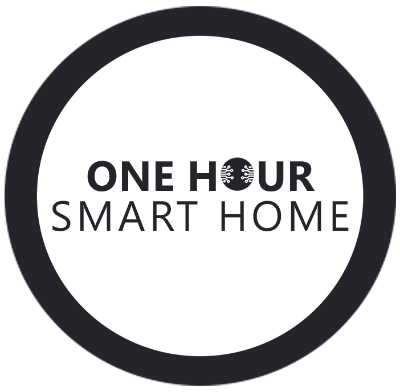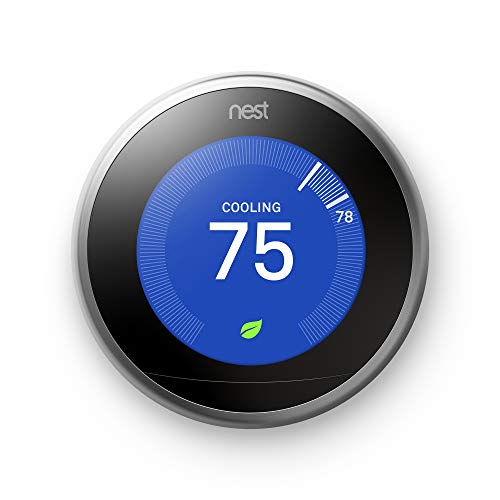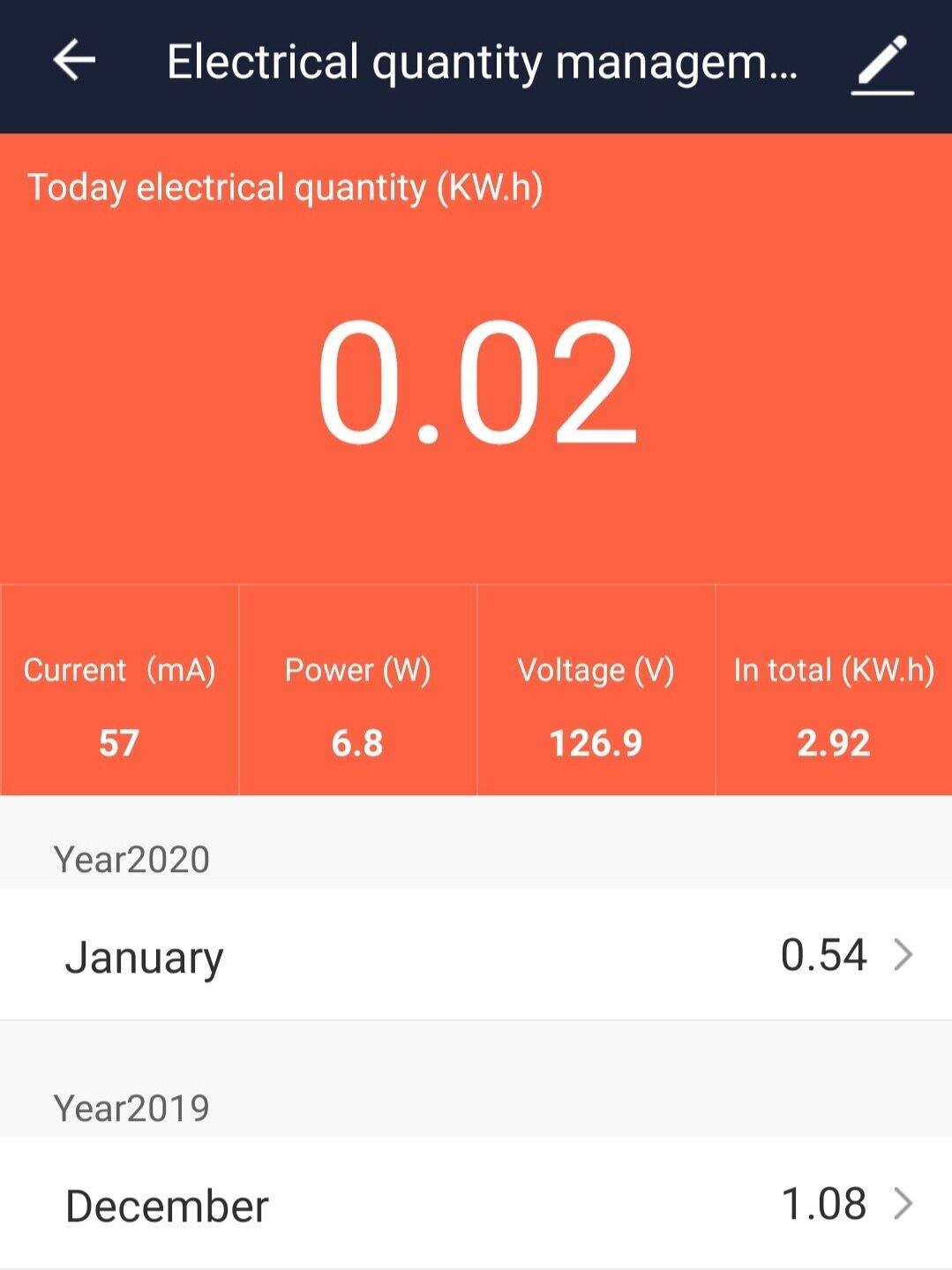How To Save Energy At Home With Smart Home Devices
/If you’re looking to save energy at home or reduce your carbon footprint there are plenty of smart home devices that can both help you save energy and add comfort to your home.
Upgrading your home with energy efficient devices is one of the most economical and most accessible ways to save energy in your home. Unlike adding solar panels or re-insulating your house adding energy efficient smart home devices can save you ton’s of energy without the headaches involved with major renovations.
Below we teach you how to save energy at home with smart home devices
Smart Thermostats: Super Energy Savers
Smart Thermostats are one of the most effective ways to save energy, and offer easy DIY installation for most homeowners. It can take as little as 15 minutes to install a smart thermostat but they can save you anywhere from 10-15% or more each month in energy costs.
What I like most about smart thermostats is that they provide year round energy savings and can save you money regardless of the climate you live in. The primary way smart thermostats help you save money is by automatically turning down the heating or cooling while you’re away or at work to reduce your energy consumption and smart footprint.
Many utility companies have programs to subsidize the cost of smart thermostats so you can get one at reduced price. Some more forward thinking utility companies even have programs that will pay you to reduce your energy consumption at peak periods that helps you save energy and prevents the utility company from producing more dirty energy.
The two most popular smart thermostats are the Nest Thermostat and Ecobee Smart Thermostats. Both are great smart thermostats that will help you save you energy at home and are loaded with features that let you remotely control your thermostat from your phone but also help you automatically save energy while you're away. You can't go wrong with either of these smart thermostats but in my opinion the Nest does have a slight advantage because it has a little easier DIY installation and won't require a common wire for most homes. I also think the Nest has a beautiful design which is stunning in any home.
Save Energy With Smart Energy Tacking Plugs
I love using Smart Plugs around the house to help me save energy at home because they are an inexpensive tool to reduce your carbon footprint that requires no technical knowledge. Smart plugs allow you to remotely turn on and off things you have plugged into them like lamps, fans, heaters or air conditioners with your phone. But what I like most about smart plugs is that some models will show you real time energy consumption and track energy consumption.
It's a great way to get insight into just how much energy devices throughout your home use, so you can understand which devices use the most electricity and try to adapt your energy usage accordingly.
Energy Consumption Tracking With Smart Plugs
Smart plugs not only allow you to control the devices from your phone but you can also set schedules to automatically turn devices on or off a set times to save energy. What's even better is that most smart plugs will connect to smart voice assistants like Amazon Alexa and Google Home so that you can turn your smart plugs on and off with just your voice. Both of the smart plugs listed below support energy tracking.
Save Energy With LED Light Bulbs
This is probably one of the single easiest upgrades to make, all it involves is changing out your existing light bulbs from standard incandescent light bulbs to energy efficient LED light bulbs. LED's are typically 10 times more efficient that old style incandescent light bulbs so swapping them out can make a huge difference.
LED light bulbs often get a bad wrap because people will complain about the color of the light. However LED light bulbs come in all colors of light and you can find light bulbs that have that exact same color as old style incandescent light bulbs. You just need to know what color to look for when choosing LED light bulbs. When searching for LED light bulbs if you want a more traditional look go for LED "Warm White" light bulbs which are designed to match the same color as old incandescent bulbs. "Daylight White" LED light bulbs provide more of a blue light that you might find in an office building or hospital, typically I don't recommend that Homeowners get "Daylight White" led bulbs unless they really like that color of light and know what they are getting into. I've included my favorite choices for both "Warm White" and "Daylight White" LED light bulbs below. You can even get "Warm White" Smart light bulbs that allow you to control them with your phone or voice.
It's important to note that fluorescent bulbs are also marketed at energy saving light bulbs.
HOWEVER IT’S IMPORTANT TO NOT INSTALL FLUORESCENT LIGHT BULBS, THEY CONTAIN MERCURY.
While fluorescent light bulbs do save energy they actually contain mercury inside the light bulb that is hazardous if the light bulb is exposed and are required to be properly recycled to prevent mercury contamination. This makes fluorescent light bulbs far less environmentally friendly than LED light bulbs. LED light bulbs are non hazardous waste and are nothing more than electronic circuit that puts out light, they are typically made of plastic instead of glass which also makes them less likely to break than fluorescent light bulbs.
How To Save Energy At Home With A Fan
Fans are very energy efficient in comparison to Air Conditioners and can offer an effective way to cool down at night. Placing a fan to blow directly across your body at night will reduce your effective felt temperature if you are to hot just like the wind chill can make the temperature feel hotter or colder outside.
You can also use fans to remove hot air from your house by opening and window and sucking warmer air out of the house. Or if the temperature outside drops lower than the interior of the house you can pull in cool air from outside to cool down your house.
You can even add a smart plug to your fan or get a smart fan so that you have remote control of the fan from your phone just like you would have remote control of a smart thermostat.
How To Save Energy At Home With Your HVAC Fan
What most people don't know is that your HVAC system already has a very energy efficient fan built right into it and you can typically use the fan without activating your heating or cooling system. Most houses have a tendency to heat and cool unevenly, the end result is that most people either over heat or over cool their houses wasting energy because some parts are hotter or cooler than others.
A simple way to more effectively heat and cool your home it so leave the HVAC fan circulating air even when the heat or cooling is off to even out the temperature throughout the home. Most smart thermostats have this feature an even some older non smart thermostats have this feature.
You can also open the windows and use the HVAC fan to circulate air if there isn't a cross breeze going through the house to save energy.
How To Save Energy With Smart Thermostat Room Sensors
Both the Ecobee and Nest Thermostat have compatible room temperature sensors that allow you to monitor and control the temperature in specific rooms. This can help you save energy because with smart thermostat Room Sensors you can adjust your room HVAC vents to heat and cool just the rooms you want to the proper temperature. This way if you want to heat or cool your bedroom to a specific temperature you can do so without needing to heat or cool the rest of the house to the same level which can save you energy. I have a Nest Thermostat in my home and placed Nest Room Sensors in my bedroom and have noticed both a significant energy savings and better sleep by precisely dialing in the same temperature in the bedroom each night before bed.
Saving Energy At Home Summary:
Saving energy doesn't have to be complicated or expensive or require you to install solar panels. There are plenty of low cost ways to start saving energy and reducing your environmental footprint that you can get started with today. It's better to make at least some small steps towards saving energy today than wait years to start saving. Something as simple as installing LED light bulbs takes just a few minutes and part of maintaining a home. The best part about LED light bulbs is that not only do they use less energy but they also can last 10+ years.
I hope you get started on the path to saving energy because it's easier than you think.
Related Smart Home Posts
Nest vs Ecobee Smart Thermostats













